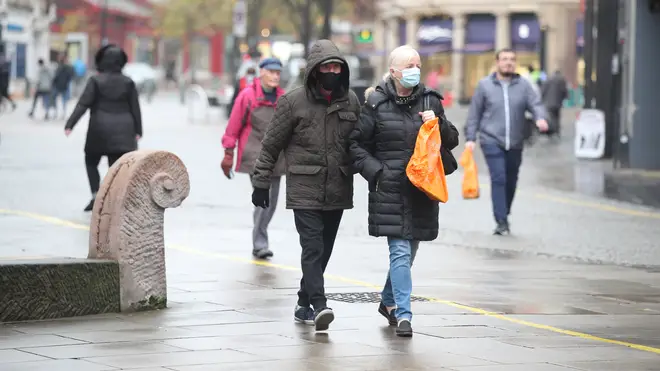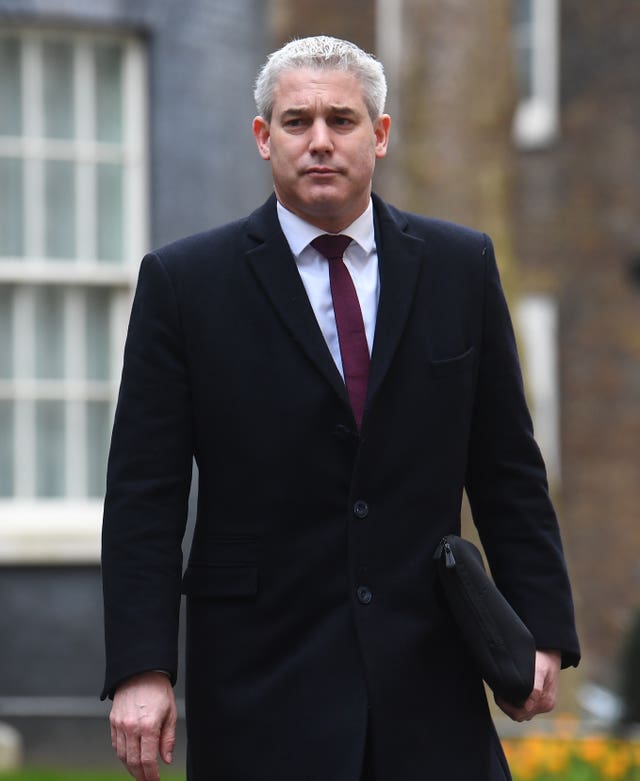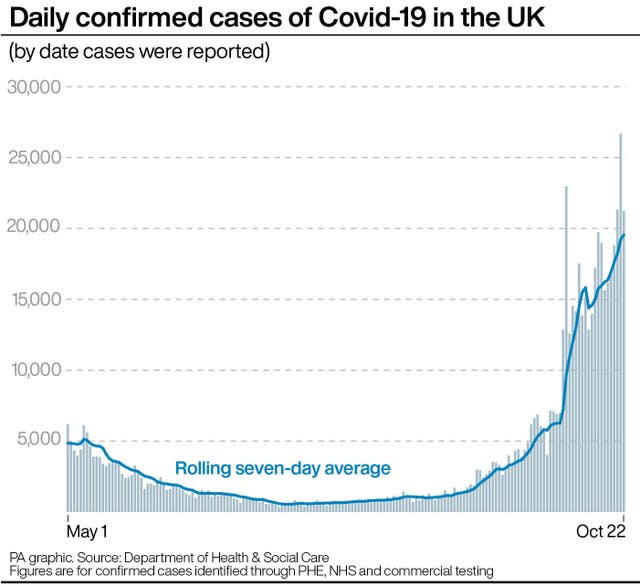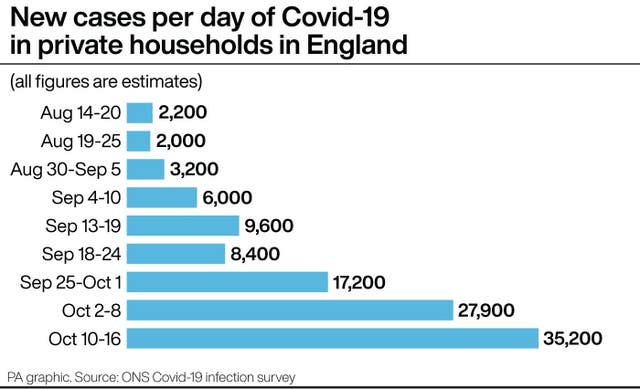
Shelagh Fogarty 1pm - 4pm
23 October 2020, 19:04

Professor John Edmunds has told MPs he feels ‘gloomy’ about the current outlook, and has called for a national circuit-breaker.
The idea that “we can carry on as we are” and have a normal Christmas “is wishful thinking in the extreme”, a Government scientific adviser has said.
Professor John Edmunds, a member of the Scientific Advisory Group for Emergencies (Sage), said “radical action” would be needed to stem the rise in coronavirus cases, particularly in regions with high incidence of the virus.
It comes after Chief Secretary to the Treasury Stephen Barclay said he hoped families would be able to spend Christmas together even if things are not exactly the same.

Asked how he would describe the chances of people having a “normal Christmas” despite Covid-19 restrictions, Mr Barclay told BBC Radio 4’s Today programme: “I would describe it as a shared endeavour for all of us.
“All of us want to be able to enjoy Christmas with our families. And that’s why there is a common purpose here to get the virus down.”
Referring to Christmas, Mr Barclay said: “I think few people expect it to be exactly as it would normally because we will be living with this virus for some time.
“And the chief medical officer and the chief scientific adviser have been very clear on that.
“But, your point really was about the ability of families to spend Christmas together – that is something we all hope to be in a position to do.”
Downing Street said it was the Government’s “ambition to ensure that people may celebrate Christmas as a family this year”.
However, Prof Edmunds, who told MPs on Wednesday that tens of thousands of deaths could occur during this wave of the pandemic, said further measures are needed to bring cases down.

He told the PA news agency that a circuit-breaker is needed across the whole country or at least in areas where incidence is high.
“The only way that we can have a relatively safe and normal Christmas is if we take radical action now to reduce incidence – at the very least in high incidence areas – and keep the incidence low across the country by implementing a package of measures to reduce social contacts,” he said.
“The notion that we can carry on as we are and have a Christmas that we can celebrate normally with friends and family is wishful thinking in the extreme.”
Prof Edmunds told MPs on Wednesday the UK would see “peaks around Christmas, in the new year of very severe numbers of cases throughout the UK”.
A further 224 people had died within 28 days of testing positive for Covid-19 as of Friday, while as of 9am there had been a further 20,530 lab-confirmed cases in the UK.
Sweeping new restrictions were imposed on millions more people on Friday, with Greater Manchester moving into the highest alert level, Tier 3, and Wales introducing its two-week “firebreak” lockdown at 6pm.
Coventry, Stoke and Slough will enter Tier 2 on Saturday, while Warrington is set to be placed into Tier 3 from Thursday next week, the local council said.
Tier 3 restrictions are also expected to come into force in parts of Nottinghamshire on Wednesday.

Meanwhile, Nicola Sturgeon set out a five-level plan of measures for dealing with the coronavirus pandemic in Scotland.
The five levels range from zero, which the First Minister said would be as close to normal as the country can be without effective treatment or a vaccine, to the highest level of four which is “closer to a full lockdown”.
If approved at Holyrood next week, the new measures will come into force in Scotland on Monday November 2.
It came as new figures suggested the number of new daily coronavirus cases across England has doubled in a fortnight but the rate of growth may be slowing down.
Figures from the Office for National Statistics (ONS) infection survey estimates there was an average of 35,200 new cases per day of Covid-19 in the community in England between October 10 and 16.
This is up 26% from an estimated 27,900 new cases per day for the period from October 2 to 8 and just over double the 17,200 new cases per day from September 25 to October 1.

Professor James Naismith, from the University of Oxford, said the most recent figures – looking at the increase from 27,900 to 35,200 cases per day – suggest the rate of growth of the epidemic may be slowing down.
Sage said the reproduction number, or R value, for the whole of the UK had nudged down to between 1.2 and 1.4. Last week, the group said the R number was between 1.3 and 1.5.
Meanwhile, Labour called on the Government to clear up “confusion” over new plans to help businesses deal with coronavirus restrictions.
The Chancellor still hasn’t come clean on the phantom funding formula he’s using to determine funding for areas under tier 3 restrictions.
We need clear, consistent and fair funding for jobs and businesses, not playing poker with people’s livelihoods. pic.twitter.com/4dRzdk7F31
— Anneliese Dodds (@AnnelieseDodds) October 23, 2020
Chancellor Rishi Sunak needs to clarify how long elements of the package will be in place for, shadow chancellor Anneliese Dodds said.
She told the BBC: “The Chancellor suggested that a number of these measures will apply, he stated, for six months.
“He has set out that approach for some elements of his plan, but there is a lot of confusion around other elements, whether they’re short-term, long-term, what exactly the score is.”
On the gaps in support, she said: “We didn’t really see any recognition of that, I think that’s very problematic.
“If people got a little bit of savings, which a lot of self-employed people do have, then they get knocked out of that support very quickly, they have to wait for five weeks.
“The Chancellor could’ve fixed that yesterday (Thursday) but he decided not to do that unfortunately.”
Mr Sunak announced an emergency multibillion-pound bailout on Thursday aimed at supporting workers and firms through the second coronavirus wave.